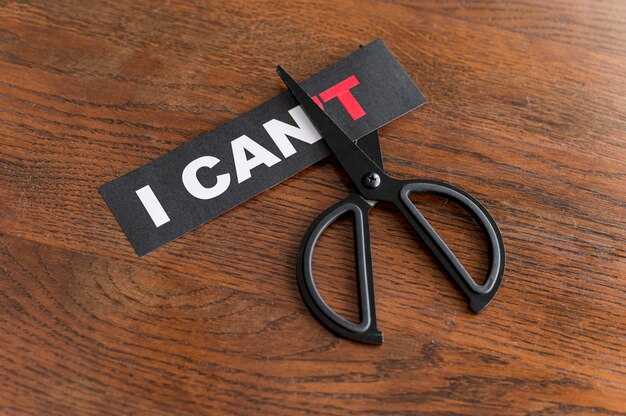Have you ever stopped pursuing someone and noticed the energy in the room shift? One moment you’re sending messages, explaining yourself, doing everything to keep the bond alive. The next, you simply pull back. You stop initiating contact. You stop fixing things. You stop pouring yourself into someone who consistently retreats whenever you reach out. And here’s the striking part: the instant you go quiet, something alters — not only inside you, but in them as well. This piece explains how silence impacts a person with an avoidant attachment style and why it can be the most potent step you can take when you’re trapped in that exhausting push-pull pattern. You know the feeling — that hollow ache when they pull away, the compulsion to send one more text, the endless replaying of conversations wondering what you did wrong, the frantic urge to mend things before they vanish. Yet the more you pursue, the more they recede. The reality is this: avoidant people become hooked on the emotional upheaval that your chasing produces. They thrive on the drama, the reassurance, the subtle power it hands them. The minute you stop feeding that cycle, the entire relationship dynamic rewrites itself. Over the next stretch of reading, you’ll get a clear picture of what shifts in their head, heart, and in the connection between you the moment you choose silence instead of reaction — because that silence is not a sign of weakness but the start of a change in who holds the power. Before we explore how your quiet reshapes everything, you must first grasp what you’re actually facing. Misunderstanding the avoidant mindset leads to misreading every move. Avoidant attachment isn’t merely a preference for space; it’s a nervous system calibrated to equate intimacy with danger. It stems from a profound fear of closeness — so intense that when they feel truly seen, desired, or emotionally exposed, their instinct is to pull away. It’s not usually a conscious attempt to wound; it’s a self-protective reaction: “This is risky. I need to step back.” Their protection, however, shows up as withdrawal, inconsistent signals, and hot-and-cold behavior. This pattern usually predates your relationship. Avoidant strategies are often rooted in childhood — inconsistent caregiving, emotional neglect, or early experiences where closeness led to pain. With time they come to believe, “If I get too close, I’ll lose myself or get hurt.” In relationships this becomes messy. The avoidant will come close enough to feel warmth and connection, then slam on the brakes the moment their system recognizes things are becoming serious. Crucially, they rarely vanish entirely. Instead they back off just enough to create anxiety and then wait. Why? Because your response becomes their barometer. When you chase, explain, or fight to keep the bond, you hand them two gifts: validation — proof they’re still desirable — and control — confirmation they can set the rhythm and tone. That’s why their oscillation between affection and distance keeps you engaged: the warmth hooks you, the distance keeps them safe, and you end up carrying most of the emotional work — sustaining the bond, repairing ruptures, managing both sets of feelings. I don’t mean to paint avoidants as villains; the point is to recognize the pattern so you can alter your role. If you’ve been the one bridging every gap, you’ve trained them to expect pursuit. Your silence is the first interruption to a lifetime of that cycle. When you stop giving them the emotional fuel they’ve relied on, the situation shifts dramatically. Now that you see the mindset, let’s examine the mechanism that perpetuates this dynamic. Avoidants don’t merely need physical distance; they subsist on the emotional energy that your reactions provide, often without consciously realizing it. Here’s the loop: they create space, you feel the void and move toward them, they get a surge of reassurance — “I still matter; they’re coming back.” Repeat. Your texts, explanations, “can we talk?” messages, even your anger — all become emotional supply. Every reaction confirms you’re affected and invested, and for someone who fears vulnerability, that’s a way to feel connected while staying detached. There’s another layer: the push-pull frequently masquerades as passion. Avoidants can mistake emotional turbulence for intensity. Your chasing and confronting can feel familiar to them; that fraught energy, even when painful, may feel safer than calm, steady intimacy. Meanwhile you’ve been doing the labor: initiating, smoothing things over, propping the relationship up while they benefit without matching effort. When was the last time they consistently started conversations or actively repaired a breach? This imbalance endures only so long as you keep supplying the energy. Because avoidants rarely voice their needs, they rely on these cycles to keep you engaged without showing vulnerability. But here’s the turning point: your silence cuts that supply line. No more on-demand reassurance. No more automatic proof that you’ll always bridge the gap. No more unpaid emotional labor. When the fuel runs out, the avoidant faces what they’ve been avoiding: if they want connection, they must seek it. Your quiet protects you and reverses the emotional economy, making them the one now required to initiate, invest, and take a risk — and that’s where the balance begins to shift. So what actually happens the moment you withdraw? For an avoidant, silence is never neutral; it disrupts the pattern they’ve come to expect from you. Up until now the rhythm was predictable: pull away, see you chase, draw in, test again. Even your anger was engagement — proof they mattered enough to provoke a response. Silence is different. It communicates, “I’m no longer chasing. I refuse to be managed. If you want this, you’ll have to come and show it.” The causal chain is simple and stark: you stop feeding the cycle, their emotional supply vanishes, and they are forced to sit with the gap they created without the comfort of your guaranteed response. That space becomes uncomfortable as their own fears and loneliness surface. They can no longer use your pursuit as a shield from vulnerability. For them, it’s jolting: you’ve always been the one to fill those gaps; now the gap remains. Important to note: your silence isn’t a manipulative game to make them miss you or punishment. It’s a withdrawal from a dynamic that’s been draining you. When you step out of the blast zone of their emotional grenades, those explosions stop landing. For the avoidant, that loss of impact is shocking. Their tactics — unpredictability and distance — stop determining the emotional climate. Without that control, they face a choice: remain safely distant and risk losing you, or move toward you and engage vulnerably. That choice is the disruption your quiet creates; it flips the script and forces them to meet you halfway if they want the relationship to continue. Now things get intriguing because after you’ve stayed silent long enough for them to realize the old rules no longer apply, you provoke a role reversal they rarely experience. Once, they were the one in command: deciding when to show up, when to back away, when to toss you a crumb of affection to keep you chasing. You were doing the work. When you go silent, those roles invert. Suddenly they’re the ones who must risk rejection by reaching out. They risk appearing needy by expressing interest, risk feeling vulnerable by admitting they care. For someone who has spent a lifetime avoiding vulnerability, that’s not merely awkward — it’s terrifying. Psychologically, avoidants maintain emotional control by always being one step removed: let you advance, then retreat, preserving distance without completely cutting ties. Your silence forces them into forward motion if they want the connection to survive. Moving toward you means confronting fears they’ve been running from: dependence, entrapment, getting hurt. When you hold your silence, they get a glimpse of the uncertainty you’ve borne — the doubt, the longing, the risk of reaching out and being rejected. For the first time, they feel the same edge you’ve lived on for months or years. That isn’t revenge; it’s restoring balance. It’s the only effective way for them to grasp that intimacy requires vulnerability from both people, not just from one. Some avoidants will lean in after that; some won’t. Either way, the pattern has shifted because they now know you’re not endlessly carrying the emotional load. This is the psychological reversal: they can no longer coast on your investment. If they want you, they must choose by their actions and words. Another of the avoidant’s most harmful control tactics is emotional regulation through inconsistency. They keep you hopeful by offering small doses of warmth, then pull back just enough to make you insecure. A warm text, then radio silence for days. Plans made, then suddenly a need for space. Vulnerability dripped out only occasionally so you keep chasing the next open moment. That unpredictability destabilizes you, and when you’re off balance you unwittingly change your behavior to maintain the connection. They set the tempo and you dance to it. But this only works while you react. Your silence halts that tempo. When you stop responding to hot-and-cold swings, refusing to let their mood govern your inner state, the music stops. They can push and pull, but you don’t follow. That loss of responsiveness strips away their favorite tool. They can test you, but you won’t jump in unless something real is on the table. This isn’t about becoming cold; it’s about aligning your behavior with your values. By refusing to let them determine when you feel secure, you dismantle their ability to use unavailability as a weapon to keep you perpetually pursuing. Some will try to provoke you — confusing messages, manufactured drama, button-pushing — but if you maintain your silence you demonstrate consistency, self-control, and boundary-setting, showing them the game is over. They will either engage authentically or watch you leave. Let’s talk about mystery. Avoidants often believe their aloofness is alluring; being slow to respond and hard to read supposedly creates irresistible intrigue. That distance, in their view, makes them desirable and keeps you guessing. But most of that so-called mystery is contrived — not depth, but emotional inaccessibility clothed as allure. Your silence offers a different kind of mystery: authentic absence. Not because you’re scheming, but because you’ve withdrawn your energy from the interaction and stopped announcing or explaining your every feeling. You’re no longer providing the constant feed they depended on. Now they find themselves wondering what you’re doing, whether you’re moving on, whether they remain on your mind. This is not a ploy; it’s a genuine shift because you’ve redirected your attention to your life, healing, and joy. That lack of information creates a true, magnetic mystery. Manufactured intrigue is about withholding to manipulate; authentic mystery grows from living fully without needing to prove yourself to them. Avoidants can sense the difference. Authentic mystery is compelling because it’s rooted in self-possession, not performance. Your silence turns them into the seeker. They are no longer the ones pulling the strings; they’re the ones curious and unsettled. And this form of unpredictability — the kind that comes from your independence — can draw them back not because they’ve become secure, but because they fear losing access to your genuine life. We need to be blunt: this doesn’t only change them; it shields you. Every time you explain yourself to someone who isn’t listening, you squander energy. Every attempt to decode mixed signals drains you. Every time you overfunction while they undercontribute, you lose a part of yourself. That energy is limited; it won’t return without conscious reclamation. Your silence is the stopper in the leak. It says, “I won’t pour my emotional reserves into a bottomless pit.” Imagine all the hours you spend rehearsing responses, overanalyzing texts, rationalizing their behavior to friends or yourself. Picture devoting even half of that mental bandwidth to a career, to friendships, to physical care, or to a dream you’ve put off. Silence creates the space for those investments. You stop granting them first claim on your attention. As you reclaim that energy, you grow calmer and clearer. Your choices start aligning with your values rather than fear of loss. Silence marks the moment you stop playing defense in someone else’s emotional arena and begin playing offense in your own life. You become intentional rather than reactive. And when you cease overgiving, the relationship must rebalance. You no longer carry all the weight. If they want closeness, they must step up and initiate. By protecting your energy quietly but firmly you send an unmistakable message: my time and feeling matter. The result is twofold: you become stronger, and you become more attractive — not as bait, but because steady, self-contained energy is magnetic. Remember: silence is preservation, not punishment. Preservation gives you the authority to choose who and what deserve your time. Up to this point, much of what you received from them was reactive, not true desire. They were responding to your pursuit, not initiating from their own genuine want. That’s a critical distinction. When you chased and fixed, their engagement was often merely a reaction to your filling the space. That’s management, not intimacy. Silence removes that managerial dynamic. Pressure and expectation dissolve, and what remains is their actual desire. If they reach out now, it’s because they genuinely want connection. That energy is different: it requires vulnerability and internal admission — “I miss them. I want to talk. This matters to me.” When they contact you after a period of quiet, you can trust it’s not manipulation or obligation. Your silence produces a clean space where you can distinguish between someone managing your emotions and someone choosing you. For the avoidant, it also forces awareness: their discomfort with closeness isn’t about you; it’s about facing themselves without you constantly moving to bridge the gap. Some will opt to stay distant, which gives you clarity. Others will experience an unfamiliar pull. The connections that arise from that voluntary desire are rarer and far more authentic because they’re not born from pressure. Over time, your silence moves from mere inconvenience to something more elemental: fear. When you were always the first to text, to reconcile, to close the space, they had a safety net. They could withdraw for days, weeks, or months and still believe you’d be there when they returned. Your consistent pursuit insured their absence. Silence removes that safety net. Each silent day nudges the possibility that you might be moving on, that you might meet someone else, that you might have finally reached your limit. For avoidants accustomed to setting the terms of reconnection, losing that sense of control is disorienting. It forces them to confront the real possibility that you aren’t just taking a break — you might be finished. That’s when silence turns from something tolerable into something intolerable. For some, that realization is a wake-up call powerful enough to break avoidance; they choose to act, risking vulnerability because the fear of genuinely losing you outweighs the fear of closeness. If they reach out now, it comes from a place of wanting to keep you, not from a desire to manipulate. That’s the rare, pivotal moment when silence has done its work: you either get someone who steps up or you get clear evidence they won’t. Either outcome gives you the clarity you need. To sum up: throughout this dynamic the avoidant exerted control over pace and intimacy while you provided the labor. Your silence altered everything. It cut off their supply, disrupted their rhythm, initiated a role reversal, removed their manipulation tactics, replaced contrived mystery with your authentic absence, guarded your energy, elicited genuine desire, and compelled them to confront the real risk of losing you. That isn’t trivial or vindictive; it’s reclaiming your agency. Whether they step up or step away, you win because you stop living by their rules and start living by your own. Remember this: silence is not cruelty. It’s a boundary, a reset, a refusal to keep sacrificing yourself for someone who won’t meet you halfway. In that space you rediscover yourself, listen to your own thoughts, and reconnect with your worth. You weren’t asking for too much — you were asking the wrong person. So here’s the challenge: if you’re stuck in a push-pull with someone who leans avoidant, stop fueling it. Don’t make an announcement. Don’t justify it. Quietly and firmly choose yourself. Let them feel life without your constant pursuit, and give yourself the gift of regained energy, clarity, and self-respect. If they return, you’ll know it’s because they wanted to, not because you dragged them back. If this struck a chord, share your experience below about the moment silence became your turning point. If this brought clarity, like and share with someone who needs to hear it today, and subscribe so we can keep exploring the real psychology behind love and attachment. The fact is, the moment you stop chasing is the moment you start choosing — and that changes everything.



 Silêncio: Sua Arma Secreta Contra o Evitativo | Estilo de Fixação Evitativo">
Silêncio: Sua Arma Secreta Contra o Evitativo | Estilo de Fixação Evitativo">

 Love Invites and Encourages Her FEELINGS.">
Love Invites and Encourages Her FEELINGS.">
 CPTSD & The Feeling You Can’t Connect (4-video compilation).ar-en">
CPTSD & The Feeling You Can’t Connect (4-video compilation).ar-en">
 Nossas filhas precisam ouvir isso.">
Nossas filhas precisam ouvir isso.">
 Como Saber Se Você Está Ligado por Trauma (Antes Que Seja Tarde Demais)">
Como Saber Se Você Está Ligado por Trauma (Antes Que Seja Tarde Demais)">
 Casamentos RUINS causam Traições??">
Casamentos RUINS causam Traições??">
 TRAFICO é para COWARDES EGOÍSTAS (como eu)">
TRAFICO é para COWARDES EGOÍSTAS (como eu)">
 Um parceiro precisa saber sobre o seu passado — mas o que acontece se você está apenas namorando?">
Um parceiro precisa saber sobre o seu passado — mas o que acontece se você está apenas namorando?">
 Para a Cura, a Ação Sã é Mais Poderosa do que Histórias Tristes">
Para a Cura, a Ação Sã é Mais Poderosa do que Histórias Tristes">
 Até Que Esta Mudança Finalmente Fez o Evitativo Voltar | Discurso Motivacional de Mel Robbins">
Até Que Esta Mudança Finalmente Fez o Evitativo Voltar | Discurso Motivacional de Mel Robbins">
 Se Seu Parceiro Disse Essas Frases, Ele é um Evitativo">
Se Seu Parceiro Disse Essas Frases, Ele é um Evitativo">